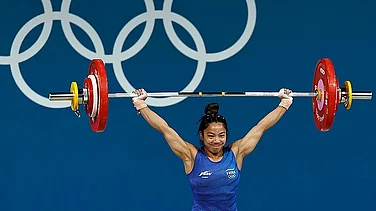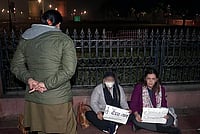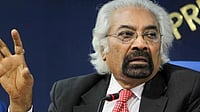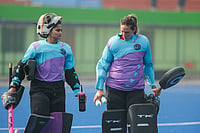Here’s a look at the capital’s most notable Olympic buildings, which the Beijingers have come to call the Big Five:
National Stadium, or the Bird’s Nest
It’s the venue for the opening and closing ceremonies. Designed by Swiss architects Jacques Herzog and Pierre de Meuron, the building is likened to a bird’s nest for its latticework of interwoven steel. The stadium would be able to accommodate 91,000 spectators during the Olympics, although 11,000 of those seats will be temporary.
National Centre for Performing Arts, or the Alien Egg

The gleaming, oval-shaped Alien Egg next to Tiananmen Square
The building in the shape of oval dome floating on the surrounding shallow lake was designed by French architect Paul Andreu. The only Olympic project located in the heart of the old imperial city, next to Tiananmen Square, it has faced stiff public opposition for its perceived ‘assault’ on surrounding examples of Chinese architecture.
National Aquatics Centre, or the Water Cube

It sits next to the Bird’s Nest and its blue glowing facade evokes giant soap bubbles. Designed by Australian architectural firm PTW Architects in conjunction with CSCEC (China State Construction and Engineering Corporation) International Design and Ove Arup Engineering, it rivals the national stadium’s groundbreaking design.
Beijing Airport Terminal 3

Considered the world’s largest and most hi-tech airport building, it has been designed by famous British architect Norman Foster. It should be able to support 40 million passengers annually by the year 2020.
Chinese Central Television headquarters

The leaning towers of the CCTV headquarters
The CCTV building is formed by two leaning towers, which are bent 90 degrees at the top and bottom, forming a twisted tube. Designed by Rem Koolhaas, the project is scheduled to be completed in 2010. It has ignited debate about architects’ moral responsibility in designing buildings that help authoritarian states control information and spread propaganda.


























